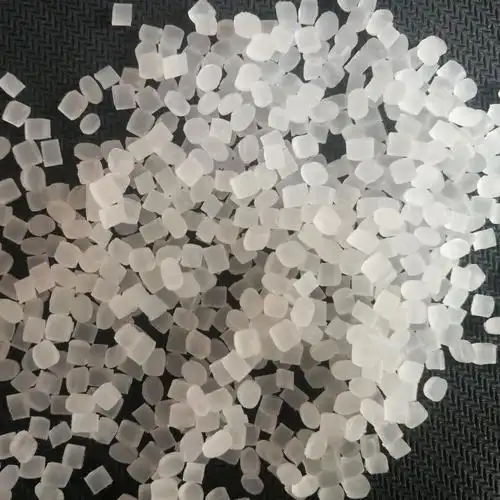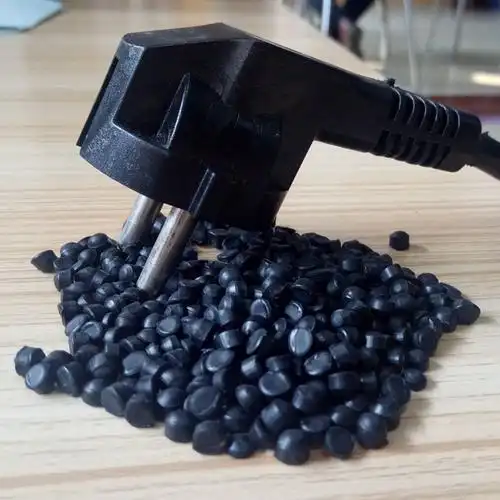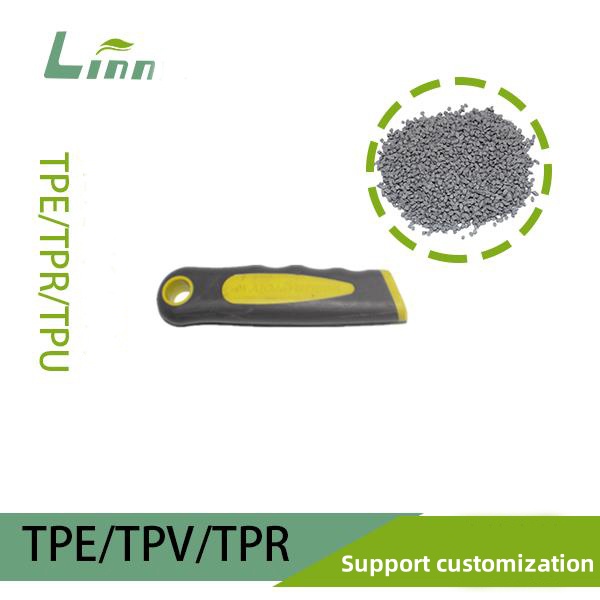As someone who’s been in the caster wheel industry for over fifteen years, I’ve seen firsthand how the choice of material can make or break a project. Whether it’s for a hospital cart gliding silently through a ward, a heavy-duty industrial trolley navigating a factory floor, or a sleek office chair, the material of a caster wheel matters. One question I get asked a lot—by everyone from engineers to DIY enthusiasts—is: What’s the difference between TPE and TPU in caster wheels? It’s a great question, and the answer isn’t just about chemistry; it’s about performance, cost, and finding the right fit for your specific needs. In this article, I’ll walk you through the key differences between Thermoplastic Elastomer (TPE) and Thermoplastic Polyurethane (TPU), share practical insights from my experience, and help you decide which is best for your application. Let’s roll into the details.

Understanding TPE and TPU: The Basics
Before diving into the specifics, let’s clarify what TPE and TPU are. Both are part of the thermoplastic elastomer family, meaning they combine the flexibility of rubber with the processability of plastic. They can be molded, extruded, and recycled, making them popular for caster wheels. However, their differences in composition and properties lead to distinct performance characteristics.
TPE (Thermoplastic Elastomer): TPE is a broad category of materials, often based on styrene block copolymers like SBS (styrene-butadiene-styrene) or SEBS (styrene-ethylene-butylene-styrene). In caster wheels, TPE is typically formulated to balance elasticity, durability, and cost. It’s known for its softness, shock absorption, and low noise, making it a go-to for applications where quiet operation and floor protection are priorities.
TPU (Thermoplastic Polyurethane): TPU is a specific type of TPE, made from diisocyanate and polyol segments, giving it a unique blend of rubber-like elasticity and plastic-like strength. TPU is prized for its wear resistance, load capacity, and chemical resistance, but it comes with trade-offs like higher cost and noise.
In my years working with manufacturers and clients, I’ve seen both materials shine in different scenarios. The trick is understanding their strengths and limitations to match them to your environment.
Why the Choice Matters
Choosing between TPE and TPU for caster wheels isn’t just about picking a material—it’s about ensuring your equipment performs reliably, safely, and cost-effectively. A poorly chosen caster can lead to issues like floor damage, excessive noise, premature wear, or even equipment failure under heavy loads. For example, I once worked with a warehouse manager who switched from rubber to TPU casters on heavy-duty carts, only to realize the noise was disruptive in their shared workspace. A quick switch to TPE solved the problem without sacrificing performance.
To make the right choice, you need to consider factors like load capacity, floor type, noise levels, chemical exposure, and budget. Let’s break down the differences between TPE and TPU across these key areas.
Key Differences Between TPE and TPU in Caster Wheels
Here’s a detailed comparison based on my experience and industry knowledge, covering the properties that matter most for caster wheel performance.
1. Wear Resistance
TPU: TPU is the champion of wear resistance. Its molecular structure, with alternating hard and soft segments, makes it incredibly tough against abrasion. In high-traffic environments like factories or warehouses, TPU casters last longer, especially on rough surfaces like concrete. I’ve seen TPU casters on industrial carts withstand years of constant movement without significant wear.
TPE: TPE offers good wear resistance, but it’s not as robust as TPU. It performs well in lighter-duty applications, like office furniture or medical carts, but can wear faster on abrasive surfaces or under heavy loads. For example, in a retail setting, TPE casters on shopping carts hold up well but may need replacement sooner than TPU in a heavy industrial context.

2. Load Capacity
TPU: TPU casters excel in load-bearing capacity. They can handle heavier loads—often up to 600-1100 lbs per wheel—making them ideal for industrial machinery, heavy carts, or equipment in manufacturing plants. I’ve used TPU casters on forklifts and pallet trucks where high loads were a daily reality, and they performed flawlessly.
TPE: TPE casters are better suited for light to medium loads, typically up to 300-600 lbs per wheel. They’re great for applications like hospital beds or office chairs, where the load is moderate, and shock absorption is more critical than raw strength. However, under prolonged heavy loads, TPE can deform slightly, affecting performance.
3. Noise Levels
TPE: TPE is the quieter option, thanks to its softer composition (typically 65-75 Shore A hardness). It absorbs vibrations and rolls smoothly, making it ideal for noise-sensitive environments like hospitals, libraries, or offices. I once helped a hospital upgrade to TPE casters on their medical carts, and the staff noticed an immediate reduction in noise during patient transport.
TPU: TPU is noisier due to its harder composition (90-95 Shore A or higher). The trade-off for its durability is a louder operation, which can be an issue in quiet settings. If noise is a concern, TPU might require additional design tweaks, like softer tread patterns or dampening systems.
4. Floor Protection
TPE: TPE is non-marking and gentle on floors, making it ideal for delicate surfaces like hardwood, tile, or polished concrete. Its softer tread absorbs impacts, reducing the risk of scratches or scuffs. In a retail project, I recommended TPE casters for shopping carts to prevent damage to the store’s laminate flooring.
TPU: TPU is also non-marking, but its harder surface can be less forgiving on delicate floors. It’s better suited for rougher surfaces like concrete or asphalt, where durability trumps floor protection. In industrial settings, TPU’s ability to roll over debris without damaging the wheel itself is a big plus.
5. Shock Absorption
TPE: TPE’s high elasticity makes it excellent for shock absorption. It cushions impacts, protecting both the equipment and its contents. This is why TPE is a favorite for medical casters, where smooth, vibration-free movement is critical for sensitive equipment or patient comfort.
TPU: TPU offers decent shock absorption but lags behind TPE due to its harder composition. It’s better suited for applications where stability under load is more important than cushioning, like heavy-duty industrial carts.

6. Chemical and Environmental Resistance
TPU: TPU has superior chemical resistance, standing up to oils, solvents, and UV exposure. This makes it ideal for harsh environments like factories or outdoor settings. However, TPU is not resistant to hydrolysis, so prolonged exposure to water can degrade it over time.
TPE: TPE has good weather resistance and performs well in moderate chemical environments, but it’s less robust than TPU against oils and solvents. It’s a better choice for indoor applications where chemical exposure is minimal.
7. Cost
TPE: TPE is generally more affordable, making it a cost-effective choice for budget-conscious projects. Its lower price point doesn’t sacrifice much in terms of performance for light to medium-duty applications.
TPU: TPU is more expensive due to its superior durability and load capacity. In my experience, the higher upfront cost is often justified for heavy-duty or high-wear environments, where TPU’s longevity reduces replacement frequency.
Comparison Table: TPE vs. TPU in Caster Wheels
To make the differences clearer, here’s a table summarizing the key properties based on my observations and industry standards:
|
Property |
TPE |
TPU |
Best Use Case |
|---|---|---|---|
|
Wear Resistance |
Good, but wears faster on rough surfaces |
Excellent, highly durable |
TPU for high-traffic areas; TPE for lighter use |
|
Load Capacity |
Light to medium (up to 300-600 lbs) |
High (up to 600-1100 lbs) |
TPU for heavy machinery; TPE for carts |
|
Noise Levels |
Quiet, low vibration |
Noisier, especially on hard surfaces |
TPE for hospitals/offices; TPU for factories |
|
Floor Protection |
Excellent, non-marking, gentle on floors |
Good, non-marking, but harder tread |
TPE for delicate floors; TPU for rough surfaces |
Practical Applications: Where Each Material Shines
Over the years, I’ve worked on countless projects where the choice between TPE and TPU made a significant difference. Here are some real-world examples to illustrate their strengths:
TPE in Action: I once consulted for a medical equipment supplier who needed casters for hospital beds and carts. Noise and floor protection were critical, as the carts moved through patient wards and over tiled floors. We chose TPE casters with a 65 Shore A hardness for their quiet operation and shock absorption. The result was a smoother, quieter experience for patients and staff, with no damage to the hospital’s floors. TPE’s ability to reject debris like hair or small particles also kept the wheels clean in a sterile environment.
TPU in Action: In contrast, I worked with a manufacturing plant that needed casters for heavy-duty pallet trucks moving steel components across a concrete floor. The environment was harsh, with oil spills and metal shavings. We opted for TPU casters with a 95 Shore A hardness for their superior wear resistance and load capacity (up to 800 lbs per wheel). Despite the noise, TPU’s durability meant fewer replacements, saving the plant money over time.
These examples highlight a key lesson: context is everything. TPE is ideal for indoor, noise-sensitive, or light-duty applications, while TPU is the go-to for heavy-duty, high-wear, or chemically aggressive environments.

Making the Right Choice: Practical Tips
Choosing between TPE and TPU for your caster wheels depends on your specific needs. Here are some practical tips I’ve developed over the years to guide your decision:
Assess Your Environment: Start by evaluating the floor type and operating conditions. For delicate floors like hardwood or tile, TPE’s softness is a better fit. For rough concrete or outdoor use, TPU’s durability is key. If chemicals or oils are present, TPU is the safer bet, but avoid prolonged water exposure due to its hydrolysis weakness.
Consider Load Requirements: Check the weight your casters need to support. For loads under 600 lbs, TPE is often sufficient and more cost-effective. For heavier loads, like industrial machinery, TPU’s higher capacity is worth the investment.
Prioritize Noise Levels: In noise-sensitive settings like hospitals, offices, or retail stores, TPE’s quiet operation is a major advantage. If noise isn’t a concern, TPU’s durability makes it a strong contender.
Test Before Committing: Always test casters in your specific environment. I’ve seen projects fail because assumptions about material performance didn’t hold up. For example, a client once used TPE casters in a high-traffic warehouse, only to find they wore out quickly. A small-scale test with TPU could have saved them time and money.
Balance Cost and Longevity: TPE is cheaper upfront, but TPU’s longer lifespan can reduce replacement costs in demanding applications. Calculate the total cost of ownership over time to make an informed decision.
Consult with Suppliers: Work with a reputable caster supplier who can provide technical data sheets and recommend materials based on your needs. In my experience, companies like YLcaster or Techin offer detailed guidance on TPE and TPU options.
Environmental and Safety Considerations
Both TPE and TPU are eco-friendly compared to traditional rubber, as they’re recyclable and don’t require vulcanization. TPE has an edge in environmental safety, as it’s non-toxic and often used in medical applications. TPU, while safe, requires careful handling in wet environments due to its hydrolysis sensitivity.
From a safety perspective, both materials are non-marking, reducing the risk of floor damage. However, TPU’s higher hardness can cause more vibration, so consider adding shock-absorbing mounts if using TPU in sensitive applications. Always ensure casters are rated for the load and environment to prevent accidents, like equipment tipping or wheel failure.

The Future of TPE and TPU in Caster Wheels
The caster industry is evolving, and both TPE and TPU are benefiting from innovations. Advanced TPE formulations, like those with enhanced debris rejection (e.g., Xtra-Soft TPE), are closing the gap with TPU in durability. Meanwhile, TPU blends are being developed to reduce noise and improve hydrolysis resistance, making them even more versatile.
I’m particularly excited about smart casters that integrate sensors to monitor load and wear in real time. These could pair with TPU’s durability for heavy-duty applications or TPE’s softness for precision environments, offering data-driven insights to optimize performance.
Conclusion
Choosing between TPE and TPU for caster wheels is about aligning material properties with your specific needs. TPE offers quiet operation, shock absorption, and cost-effectiveness, making it ideal for light to medium-duty applications in noise-sensitive or delicate environments. TPU, with its superior wear resistance, high load capacity, and chemical resistance, is the go-to for heavy-duty or harsh conditions, though it’s noisier and pricier. My years in the industry have taught me that there’s no one-size-fits-all solution—success comes from understanding your environment, testing options, and balancing performance with budget.
Whether you’re outfitting a hospital cart, an industrial trolley, or a retail display, take the time to evaluate your requirements and consult with suppliers. The right caster material can transform your equipment’s performance, saving you time, money, and headaches in the long run.
Related Questions and Answers
Q: Are TPE casters better than TPU for hospital equipment?
A: TPE is usually better for hospital equipment due to its quiet operation and excellent shock absorption, which protect sensitive equipment and ensure patient comfort. TPU is noisier and better suited for heavy-duty applications.
Q: Can TPU casters be used outdoors?
A: Yes, TPU’s chemical resistance and durability make it great for outdoor use, especially on rough surfaces. However, avoid prolonged water exposure, as TPU is not resistant to hydrolysis.
Q: Why is TPE cheaper than TPU?
A: TPE is less expensive because its SBS or SEBS-based composition is simpler to produce than TPU’s diisocyanate-polyol structure. TPE’s lower cost makes it ideal for budget-conscious projects with lighter loads.
Q: How do I know if my casters are wearing out too quickly?
A: Check for signs like visible tread wear, reduced smoothness, or increased noise. If TPE casters wear out fast, consider switching to TPU for better durability in high-traffic or abrasive environments.





